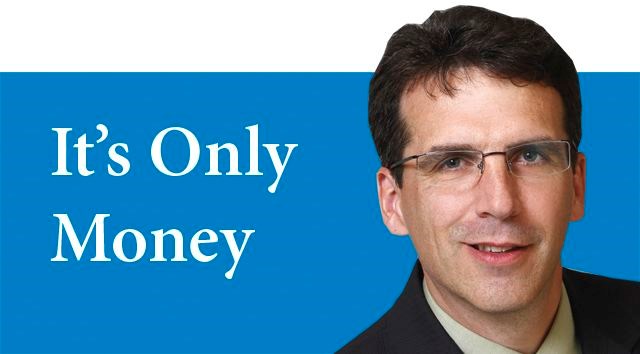By the time this hits print, the Fall Economic Statement (FES) will have been delivered, but I am writing the night before (see story, page 6). It's OK. I have help from a few disembodied friends.
The FES is not to be confused with Fiscal Excess Syndrome, but this evening, as Finance Minister Bill Morneau tries to sleep, Preston Manning will tweet him, promising a restless night in which will be visited by three spirits.
Ghost No. 1
The federal government's pending release of the Fall Economic Statement may hold some surprises, but one near-certainty is continued deficits as far as the eye can see. Despite a bubbly economy, if anything, even larger deficits are likely. Ottawa long ago abandoned any pretense of balancing the budget in favour of targeting the debt-to-GDP ratio, which is a very weak fiscal anchor and encourages fiscal policy that exaggerates the economic cycle. debt-to-GDP budgeting implies that we will cut costs during a recession, and then raise them during a buoyant economy. The ghost of John Maynard Keynes will haunt the minister at the crack of midnight tonight to remind Morneau that the Nobel-Prize-winning idea was to nudge program spending up during a recession, then pay down the associated debt during good times. Morneau will look confused and then the spirit will slap him in the face with a pumpkin pie.
Ghost No. 2
The Trudeau/Morneau Debt-to-GDP policy has resulted in rapid program spending growth - averaging six-and-a-half per cent annually over the last three years, up from a one-and-a-half per cent average in the preceding three years. This fire-fueling fiscal stimulus is putting added strain on inflation and consequently interest rates. The spirit of Milton Freedman can be heard moaning in the parliamentary library. Freedman's Nobel-winning concept said low interest rates are an effective tool for stimulating growth - amply proved again over the past decade, pulling us out of the most frightening recession in 70 years.
But times are good now, and so Freedman will visit him and remind Morneau that what we need now is "more-no." At this point in the economic cycle, fiscal policy would be better aimed at running budget surpluses and reducing debt to better position the Canadian economy for an eventual slowing.
The fact that not even a tiny Timbit of frugality is likely to be invited to dinner can't be blamed on the fiscal numbers to date. Revenues over the first five months of the fiscal year are running eight per cent ahead of comparable numbers for a year earlier, while program spending is tracking up 2.9 per cent, fairly close to the 2.5 per cent projected increase. The better-than-expected revenue growth, along with a $3 billion risk adjustment, suggests there is room for the deficit to drop into single-digit territory relative to the target of $18.1 billion for the current fiscal year and a final deficit of $19 billion for fiscal year 2017-18.
But now we are approaching an election year, and this FES is likely to be more Santa than Grinch. Despite warning from the ghosts, the FES is likely to include some new initiatives that will eat into whatever spare fiscal room has emerged. Expect Ottawa to direct some funds to support industries harmed by recent developments on the trade front in vote-rich Ontario. Although such spending could be reallocated from other expenditure buckets, past experience suggests it will show up as new spending.
The tax side of the books will get a little more attention than usual amid high expectations that the finance minister will introduce measures to improve Canadian tax competitiveness. Following recent tax reductions in the U.S. and some earlier unpopular policy moves in Canada, our relative competitiveness has deteriorated. In March, Morneau woke up, rubbed his eyes, and decided that Canadian competitiveness is Job 1 for him over the next six months. The bets seem to be on a move allowing businesses to write off investment more aggressively, which would have the double benefit of narrowing the gap with the U.S. and encouraging more investment in Canada. Many of those same business owners are still steaming from the measures he took against them a few months ago, so time will tell.
The FES may also address a couple of issues that have attracted headlines in Canada: carbon pricing and the Trans Mountain pipeline. Over the short term, however, neither of these initiatives is expected to have a fiscal impact associated with it.
Ghost No. 3
And as Morneau and friends walk triumphantly from the FES announcement, they will be attacked by the Ghost of Fiscal Futures. Shrouded in a hooded black robe, eyes darkened with football paint and carrying a heavy leather bound ledger, the spirit will press the red-inked book firmly into the nose of the minister. The corporeal nature of the experience will spook the Don of Deficits, as will the distinct resemblance of the personage to a former party icon.
And as the ghost walks away, a gust of wind will blow from the Ottawa River, revealing former Liberal finance minister, that budget-balancer extraordinaire, Paul Martin, shrouded in office curtains, muttering angrily under his breath.
Mark Ryan is an investment advisor with RBC Dominion Securities Inc. (Member-Canadian Investor Protection Fund), and these are Ryan's views, and not those of RBC Dominion Securities. This article is for information purposes only. Please consult with a professional advisor before taking any action based on information in this article. See Ryan's website at: dir.rbcinvestments.com/mark.ryan.



